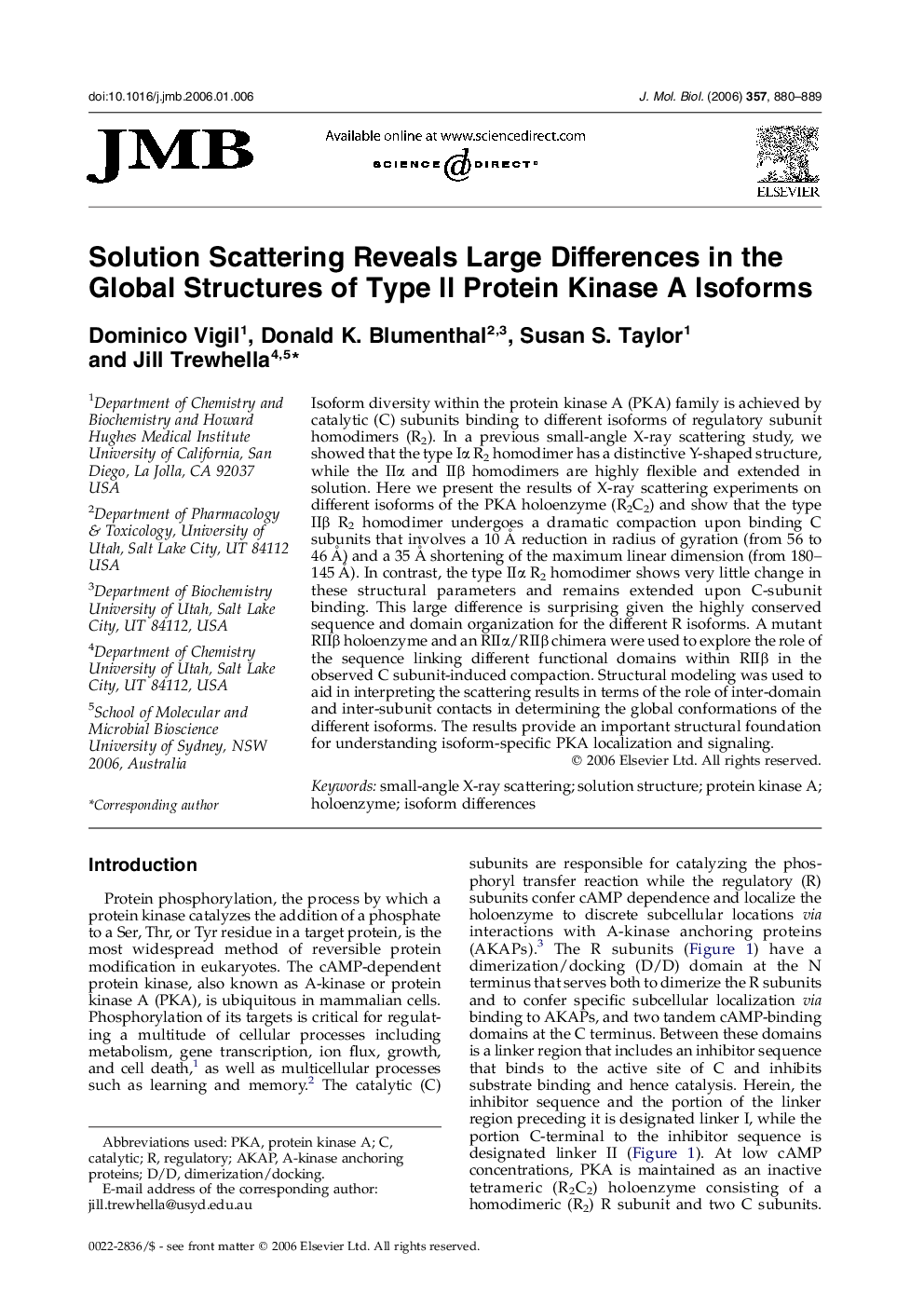| Article ID | Journal | Published Year | Pages | File Type |
|---|---|---|---|---|
| 2190047 | Journal of Molecular Biology | 2006 | 10 Pages |
Isoform diversity within the protein kinase A (PKA) family is achieved by catalytic (C) subunits binding to different isoforms of regulatory subunit homodimers (R2). In a previous small-angle X-ray scattering study, we showed that the type Iα R2 homodimer has a distinctive Y-shaped structure, while the IIα and IIβ homodimers are highly flexible and extended in solution. Here we present the results of X-ray scattering experiments on different isoforms of the PKA holoenzyme (R2C2) and show that the type IIβ R2 homodimer undergoes a dramatic compaction upon binding C subunits that involves a 10 Å reduction in radius of gyration (from 56 to 46 Å) and a 35 Å shortening of the maximum linear dimension (from 180–145 Å). In contrast, the type IIα R2 homodimer shows very little change in these structural parameters and remains extended upon C-subunit binding. This large difference is surprising given the highly conserved sequence and domain organization for the different R isoforms. A mutant RIIβ holoenzyme and an RIIα/RIIβ chimera were used to explore the role of the sequence linking different functional domains within RIIβ in the observed C subunit-induced compaction. Structural modeling was used to aid in interpreting the scattering results in terms of the role of inter-domain and inter-subunit contacts in determining the global conformations of the different isoforms. The results provide an important structural foundation for understanding isoform-specific PKA localization and signaling.
